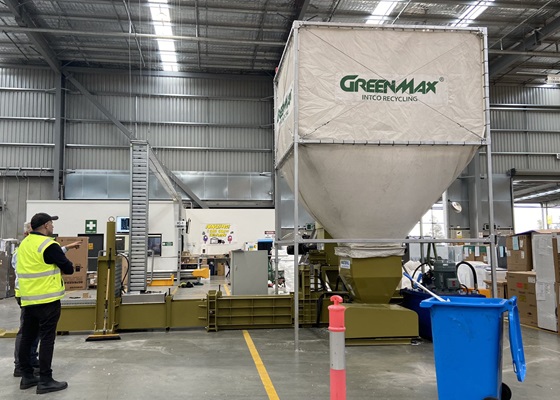New EPS Fish Box with Recycled Content, Based on Foam Box Recycling
BEWI, a packaging component and insulation solution provider, has launched a new expanded polystyrene (EPS) raw material grade and EPS fish box. This eco-friendly EPS fish box is produced based on foam box recycling and has a better environmental footprint.
The new EPS fish box is based on recycled raw materials, using materials extracted from waste EPS foam. BEWI has made significant investments in sustainable development and is committed to the recycling and reuse of used EPS fish boxes, packaging, and insulation materials through foam box recycling. The company recycled about 27,000 tons of waste EPS last year. The environmentally friendly EPS fish box proves the feasibility of the closed loop of foam box recycling and strengthens its value in the packaging and transportation market demand. Through foam box recycling, EPS fish boxes can be recycled and reused cyclically, becoming a sustainable packaging solution for the seafood packaging market with environmental value and cost-effectiveness.
In addition to EPS fish boxes, foam box recycling can also make used foam into other environmentally friendly products, such as outdoor flooring, sound-absorbing wall panels, photo frames, etc. Foam box recycling is to decompose waste foam into its original form through mechanical recycling. The whole process needs to be processed by machines such as foam compactor and foam granulator. GREENMAX Hydraulic Series foam compactor, affiliated with INTCO Recycling, compresses waste EPS fish boxes into compact foam blocks at a ratio of 70:1, which can greatly improve the efficiency of transportation and storage space management. When EPS fish boxes are collected, sorted, and cleaned, they need to be compacted before entering the next processing link of foam box recycling. Because EPS is light in weight and large in size, it is not suitable for direct transportation by truck or container. The cost will be very high and the transportation efficiency is low. Therefore, it is very necessary to use foam compactor to reduce the volume of EPS fish boxes.

GREENMAX Hydraulic Series foam compactor uses hydraulic principle to reduce the volume of foam boxes. When the broken foam is continuously transported by the screw inside the machine, the hydraulic system of the compression chamber will start. The huge pressure generated by the hydraulic pump will squeeze the EPS foam fragments tightly together. The hydraulic plate will repeatedly apply pressure to the loose EPS foam to reduce its volume under heavy pressure. Under the repeated operation of the hydraulic plate of the foam compactor, the squeezed EPS box will generate a certain amount of heat. Due to the molecular viscosity of EPS and heat, the foam will gradually form in the compression chamber of the foam compactor to form a dense rectangular block and be pushed out to the discharge chute. GREENMAX Hydraulic Series foam compactor can be equipped with a cutting device at the discharge chute to cut the EPS cold pressed blocks to a fixed length. Because of the high pressure applied by the foam compactor hydraulic pump to compact the foam, moisture in the EPS fish box will not have any effect on the efficiency of the foam box recycling. GREENMAX Hydraulic Series foam compactor has a higher compaction ratio than cold press and is compatible with a variety of water-containing materials. Therefore, hydraulic compactor is more popular with consumers than other cold-press compactors and hot melting machines on the market.

The compacted EPS foam blocks can be sold to recyclers or INTCO Recycling. INTCO Recycling provides a one-stop foam box recycling solution, including the foam block sales solution. We will provide a buyback service to machine customers at a preferential price, or introduce local sales channels to customers. INTCO Recycling acquires EPS foam blocks worldwide in order to process them into PS particles for the production of recycled products and form a closed-loop foam box recycling system.
